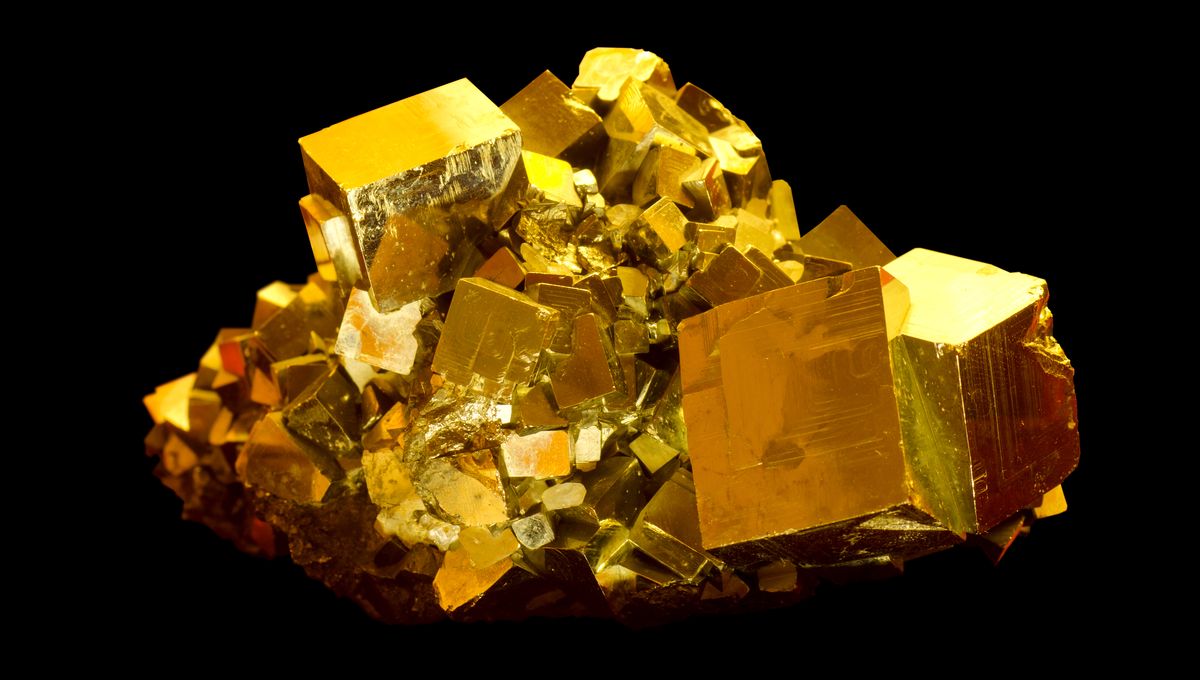Did you know that pyrite, a common crystalline iron sulfide mineral, can be found in soil and sediment as small crystals? It’s formed through a reaction between sulfide and iron, and it can come in various colors like gold, silver, chrome, and even rainbow hues.
What’s interesting is that pyrite’s resemblance to gold and its accessibility make it a popular substitute for more affordable jewelry and ornaments. However, there’s a catch when it comes to buying or selling pyrite at the price of real gold.
So, how can you tell the difference between real gold and fool’s gold?
Discovering the Truth
If you’re not concerned about the structural integrity of your specimen, there are several destructive tests that can give you a good idea of what you’re dealing with.
Hardness
One way to differentiate between pyrite and gold is by using the Moh’s test. Pyrite has a hardness score of 6 to 6.5, while gold only scores 2.5. For example, copper with a Moh’s score of 3 can scratch gold but not pyrite.
Sectility
Another test involves cutting the material with a sharp knife. Pyrite cannot be cut, whereas small portions of gold can.
Ductility
Ductility refers to how easily a material can be bent. Gold is malleable and can be easily bent and dented without breaking. Pyrite, on the other hand, either won’t bend at all or will snap under pressure.
Streak
A streak test involves scraping a specimen across an unglazed porcelain plate to observe the color of the residue left behind. A yellow streak indicates gold, while a black, green, or brown streak would indicate pyrite.
Preserving the Specimen
If you prefer to keep your potentially precious metal intact, there are non-destructive tests that can be performed, although they may be less certain.
Color
While pyrite and gold may appear similar in color, pyrite tends to have a slightly more brassy hue compared to pure gold. Natural gold can also be alloyed with silver, giving it a white undertone.
Shape
Gold often has smoother edges due to being found in bodies of water, while pyrite tends to have a more angular shape. However, this test may not always be reliable as the shape can vary depending on the conditions in which it’s found.
Striations
Pyrite crystals have lines running across their surface, whereas gold does not.
Tarnish
Pyrite easily shows signs of tarnish when exposed to the natural environment, while gold remains shiny and untarnished regardless of exposure to the elements.
Specific Gravity
Specific gravity refers to an object’s density divided by the density of water. Pyrite has a specific gravity of around 5, while gold’s is 19.3.
Gold is non-ferrous and not magnetic, unlike pyrite, which is magnetic along with some gold alloys.
Smell
As if pyrite didn’t have enough strikes against it, it also has a foul odor resembling rotten eggs. When rubbed with an abrasive object, pyrite releases this offensive smell, while gold remains odorless.
Feeling a bit sorry for stinky pyrite? Although it may not be as valuable as gold, it does have its uses. Pyrite is used to create iron sulfate, which can be found in everyday products like ink, nutritional supplements, and water treatment. It can even be used as a lawn conditioner to boost photosynthesis in plants. So, while it may not be gold, pyrite still has its place in the world.








